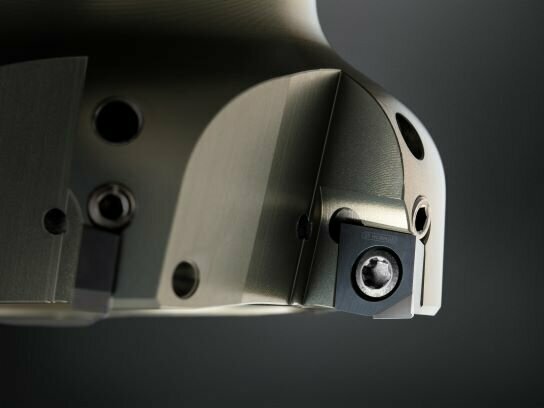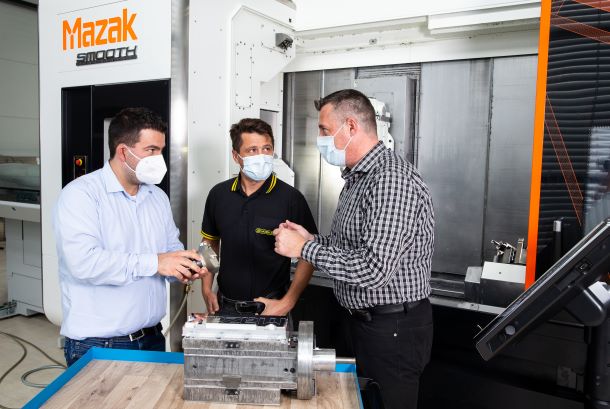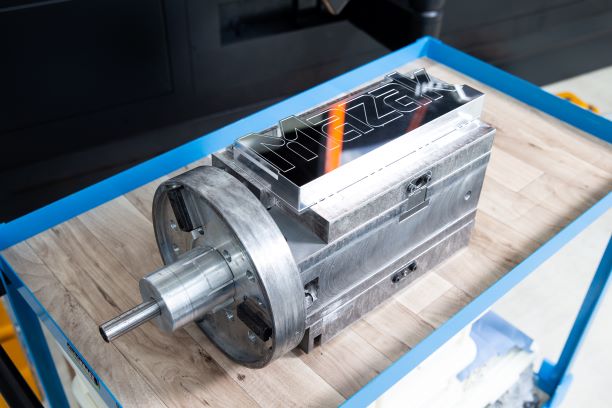Parlak bir sonuç için yüksek kaliteli elmaslar

Şirketin kurucusu Walter Schumacher, "Başkalarının kaçındığı sektörlere daldık" diyor. Oğlu Stefan ile birlikte Walter Schumacher Impuls Technik GmbH, (SIT) şirketini yönetiyor. Şirket, çok sayıda endüstride kullanılan özel valflerin ve bağımsız valf çözümlerinin geliştirilmesi ve üretilmesinde uzmanlaşmıştır. Ürün yelpazesi, yüksek vakumlu valflerden 800 bar'a kadar derecelendirilmiş yüksek basınçlı valflere kadar tüm ortam türleri için valfler içerir. Alüminyumdan yapılan bu özel çözümlerden biri, çeşitli basınçları kontrol eden ve düzenleyen birkaç helyum valfi, çeşitli sensörler, basınç tahliye valfleri ve kısmalardan oluşur. Vurgu, yüksek teknoloji analizinde işlevsellik sağlayan eşleşen yüzeylerin yüzey kalitesi üzerindedir. SIT, Paul Horn GmbH'den bir elmas takım kullanarak ve makine üreticisi Mazak'tan yeni bir tornalama/frezeleme merkezine yatırım yaparak Ra 0,012 µm (4,724409e-7") yüzey kalitesini elde etmiştir..
“After initial contact was made and the machining task had been outlined, it quickly became clear to me that the finishing processing should be performed using our DTM milling system”, says Horn product manager Jürgen Schmid. The tool is tipped with a monocrystalline diamond (MCD) cutting edge. The second cutting edge is tipped with PCD and is used as a pre-cutter to achieve the defined allowance of 0.02 mm (0.001") for the MCD. “As well as Horn, an alternative tool manufacturer was also in the running. However, Horn solved the task on the first attempt, while the other manufacturer needed three attempts. This made our choice clear, not only because we were immediately satisfied with the result, but also because of how impressed we were by the company’s expertise. We also use other tool systems from Tübingen and are very satisfied with them”, says Walter Schumacher.
Delicate surfaces
“One difficulty was the large number of holes drilled into the surface to be machined. Necessarily, brilliant-finish milling must be the final machining operation, as otherwise very fine chips from drilling, reaming and thread milling would damage the reflective mirror surface”, explains Schmid. “Even fingerprints can render the sealing surface unusable later on”, adds Stefan Schumacher. The interrupted cut across the drilled holes posed no problem for the Horn tool. During processing, the milling cutter moves once longitudinally over the workpiece at a speed n = 5,000 rpm and with a feed rate of vf = 500 mm/min (19.685"/min). The cutting speed is vc = 1,960 m/min (6430.446 ft/min). To reduce re-cutting of the chips, the tool is set at a minimum lead angle of 0.008 degree. A commercially available emulsion is used for the coolant. “We are very satisfied with the performance of the tool. In series production, we now achieve surface qualities between Ra 0.012 (4.724409e-7") and Ra 0.014 µm (5.511811e-7")”, summarises Stefan Schumacher.


